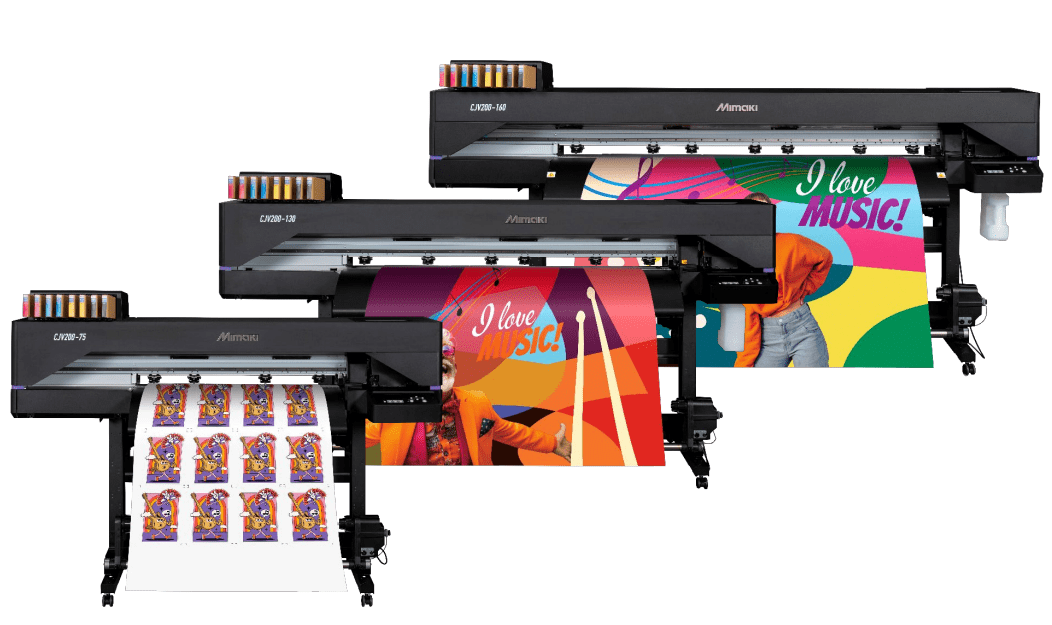For more than 15 years, Soyang Europe has brought its wide and super-wide format print products to display companies across the UK and Ireland. Our strategy is clear. But what about yours? If you’re considering how to market your printing business, here are seven essential considerations.
1. Identify your ideal customers
The starting point for every marketing strategy for a printing business should be your customers. Who are they? More importantly, who do you want them to be?
Every print business that wants to grow will have its dream clients – the ones that value your creative and technical skills. The ones that never quibble over price because they know you’ll do an exceptional job, on time. It’s also true that every print business will have those customers who value price above little else.
The fundamental point in marketing your printing business is to identify what your ideal customer looks like and ensure your activities attract more people like that, and fewer customers who eat up your time but add little value.
Take a moment to consider your customers. Who do you love working with? What makes them an ideal client?
Jot down two or three ideal customers and the reasons you love working with them.
Read: How To Improve And Grow Your Digital Printing Business
2. Identify customer wants and needs
Depending on your relationship with your best customers, you may feel this next element in marketing your print business is best done by speaking to them direct. If you feel that may be a step too far, however, put yourself in their shoes and imagine how they might answer the following question:
Why do they choose you?
We’ll assume, for the sake of argument, that they don’t choose you (purely) because of price. Lots of printers will be able to deliver a project at a decent cost, so why do they stay with you? While your technical ability may be a part of it, we imagine a complete answer will involve elements that are nothing to do with printing and far more to do with the personal.
Many print business’ most rewarding client relationships are built on partnership and collaboration; a feeling that you always understand exactly what the customer needs; a feeling that they can always rely on you and you won’t let them down. That’s certainly our experience.
Now flip that round. Consider why the customer came to you in the first place. What weren’t they getting from other printers? What were the frustrations and pain points that made them leave their last relationship and look for something better?
Now, you not only know what your ideal customer looks like. You know the key drivers that sent them in your direction. And you can bet it’s not just your existing customers that are battling with the same issues.
3. Make your proposition distinctive
A proposition is the offering a business makes to its market, to ultimately sell more services. The challenge when developing a marketing strategy for a printing business is that so many propositions sound exactly the same, usually a fairly generic mix of price, quality and speed of delivery.
But when every printer has the same proposition, there’s nothing to make you stand out. So next, consider what your key points of difference are. What do you do that is unique? What do you do better than others?
That may be the nature of your product. At Soyang, our key difference is our ability to offer a print solution for every surface at any scale. Your key difference may be the technology you use to deliver a specific product or your capacity to personalise it. It may be the eco-friendly credentials of your inks. It may be the level of your industry knowledge or the lengths to which your people go to create happy customers.
Whatever you identify as your distinctive proposition, it’s important that, in addition to it being distinctive, it should also fit with the wants and needs of your customers identified at 2.
It may, for example, be laudable to base your proposition on the green credentials of your business. But it would only make sense to pick that as the key proposition if it was something you had identified as being of major concern to your customers. Otherwise, while you may wish to make it a significant part of your offering, it may not be wise to make it your core proposition.

4. Make your proposition memorable
A great proposition needs to be one that not only resonates with your target audience, but which sticks in their mind when they actually need your services.
Being memorable really boils down to two elements:
- Ensure your proposition is easy to articulate simply
- Articulate it in a way that sticks
It doesn’t really matter how good a proposition sounds in theory unless you’re able to explain it quickly and simply enough that it will stick in the minds of those who see it or hear about it.
Try turning it into an ‘elevator pitch’. Imagine you get into an elevator at an expo with someone who wants to know what you do. You have the time between the doors closing and opening again to put your proposition across quickly and succinctly. If you can do that, you know you’ve got a proposition with potential.
Articulating your core proposition in a way that sticks is about getting your branding, design and content right (and in a consistent way) across all your marketing collateral, from website to brochures to email to social media. This takes us into branding rather than a marketing strategy for your printing business, which we’ll leave for another time.
5. Generate leads
There are two types of lead generation (that is, ways of finding customers). One goes out and finds customers (this is outbound lead generation); the other lets customers find you (inbound lead generation) – through a Google search or similar.
Outbound can often feel the more ‘old school’ marketing strategy and certainly the traditional routes of direct mail and cold calling can be inefficient, but for a visual industry like print, it’s possible a direct mail campaign could win new business, depending on your client base.
Inbound lead generation is hugely important to most businesses, and especially print. A website that packs a powerful visual punch is important to showcase your capabilities, but a website won’t appear at the top of Google search results without some form of help. Typically, that would be in the form of organic search engine optimisation (SEO) or paid advertising (Google Ads).
Then there’s the opportunity to target specific types of customer with content aimed at them. Case studies show your capability in certain sectors or with specific print formats. Blog posts enable you to share ideas and opinions. And all of them should ultimately drive viewers and readers towards a contact form or phone number, so they can get in touch with you.
6. Use (the right) social media
Ours is a visual medium and social media can be a natural way to showcase it. Some platforms are particularly well suited to print marketing. Instagram, for example, was developed primarily as a visual platform (unlike, for example, LinkedIn) and is perhaps the obvious starting point when assessing which social media platforms to join.
More important than the technical suitability of the platform, however, is choosing the social media where your clients are likely to be. If you’re a business-to-business printer and you have no designs on venturing outside that market, LinkedIn might be your natural starting point, despite it not being the obvious vehicle for your imagery. If your research tells you that your entire customer base lives on Facebook, there’s little point setting up stall somewhere else.



7. Offline social media
It’s easy to focus entirely on digital when exploring how to market your printing business, but don’t overlook ‘offline social media’ which, in ‘old money’ is simply getting out and having conversations with people. Exhibitions and conferences can let you create stands with a big impact that showcase your real-world capabilities (rather than relying on digital images), but the beauty of such events is that, in addition to the contacts you make and contracts you secure, they inevitably provide lots of content for social media, blogs and newsletters too.
Awards events give you the opportunity to pit your best against your competitors’ and benefit from the resulting publicity. This can be a particularly effective marketing strategy if your work is high profile, large scale or especially innovative.
Every printer’s big marketing advantage
You’ll no doubt have heard the old mantra about ‘show not tell’. It’s always so much more effective to show people what they stand to gain through using you, than by telling them about it. Print, of course, is all about the show, all about the impact, all about the power to wow.
That’s an immediate advantage when marketing a printing business, although it may not automatically set you ahead of direct competitors. For that, follow the other tips in this post.










